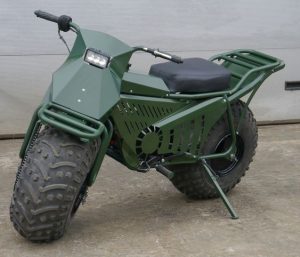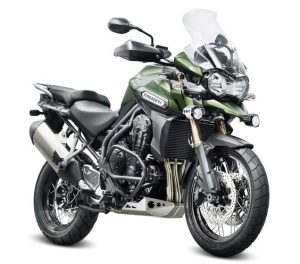Jun 4, 2024
What are the basics of riding a motorcycle?
Motorcycles offer a thrilling riding experience, but they require specific knowledge and skills to operate safely. Before hitting the road, it’s crucial to understand the motorcycle‘s basics, including controls, safety gear, and essential riding practices. This article provides a foundation for new riders, outlining the core principles of motorcycle operation.
Getting to Know Your Motorcycle
Pre-ride Inspection:
Before every ride, perform a quick inspection of your motorcycle. Check tire pressure, fluid levels, lights, and brakes to ensure everything is in proper working order.
Controls and Instruments:
Familiarize yourself with the motorcycle’s controls, including the throttle, clutch, brakes, turn signals, horn, and headlight. Understand the instrument panel, which typically displays speed, RPMs, fuel level, and neutral indicator.
Understanding Gears:
Most motorcycles have a manual transmission with gears. Learn how to operate the clutch lever and gear shifter to change gears smoothly.
Safety Gear: Shield Yourself
Motorcycle safety is paramount. Here’s what to wear:
-
Helmet: A properly fitted, DOT-approved helmet is essential. It protects your head in case of an accident.
-
Eye Protection: Wear protective eyewear like goggles or a full-face helmet to shield your eyes from dust, debris, and wind.
-
Durable Clothing: Wear sturdy clothing that covers your arms and legs. Leather or abrasion-resistant materials offer the best protection.
-
Gloves and Boots: Wear gloves that provide protection and good grip on the handlebars. Sturdy boots with good ankle support are crucial.
Mastering the Basics of Riding
-
Find an Empty Space: Once you’re comfortable with the controls and safety gear, practice riding in a safe, controlled environment like an empty parking lot.
-
Balance and Control: Start by focusing on finding your balance on the motorcycle. Practice slow maneuvering and controlled braking.
-
Clutch and Throttle Coordination: Practice coordinating the clutch lever and throttle to smoothly start, accelerate, shift gears, and come to a stop.
-
Braking Techniques: Learn how to use both the front and rear brakes effectively. Practice controlled braking in a safe area to understand how the motorcycle responds.
- Knowledge is Power: Building a strong knowledge base through research is crucial. Learn about different motorcycle types, riding techniques, and safety practices.
Important Riding Practices
-
Licensing and Training: Obtain a motorcycle learner’s permit and enroll in a motorcycle safety course. These courses teach essential skills and safety practices for new riders.
-
Always Obey Traffic Laws: Motorcycles are considered motor vehicles and must follow all traffic laws and regulations.
-
Ride Defensively: Be aware of your surroundings and anticipate the actions of other drivers. Ride defensively to avoid potential hazards.
-
Stay Alert and Focused: Avoid distractions while riding. Minimize phone use and focus on the road conditions and traffic.
-
Ride Within Your Limits: Don’t push yourself beyond your comfort level or skillset. Gradually increase your speed and riding distance as you gain experience.
Mastering the basics of motorcycle operation takes time and practice. By understanding your motorcycle, prioritizing safety gear, and practicing essential riding skills in a controlled environment, you’ll be well on your way to enjoying the thrill of riding responsibly. Remember, motorcycle safety is paramount. Before operating a motorcycle on public roads, ensure you have the proper licensing and training.
This article provides a starting point, but it cannot replace professional motorcycle safety training. Always prioritize safety and enjoy the ride!
The Road to Knowledge: Preparing to Ride
While you can’t ride a motorcycle yet, there are ways to prepare for the future:
-
Research and Learn: There are many resources available online and in libraries about motorcycles. You can learn about different motorcycle types, riding techniques, and safety practices.
-
Watch Training Videos: Educational videos can give you a visual understanding of motorcycle operation and safety gear.
-
Talk to Experienced Riders: Experienced riders can share their knowledge and insights about motorcycles.
Know Your Ride: Understanding the Parts
-
Controls: Unlike a car, motorcycles have handlebars for steering and foot controls for braking and shifting gears. Learn the terms for these controls, such as throttle, clutch, brakes, turn signals, horn, and headlight.
-
Instruments: The instrument panel on a motorcycle typically displays speed, RPMs, fuel level, and a neutral indicator. Familiarize yourself with these terms and their importance.
-
Gears: Most motorcycles have a manual transmission with gears. This means you’ll use the clutch lever and gear shifter to change gears smoothly while riding. Understanding terms like clutch, gear shifter, and neutral is essential.
Putting Knowledge into Action: Safe Riding Practices
When you are ready to take the next step, consider enrolling in a motorcycle safety course offered by a reputable institution. These courses will provide you with essential hands-on training on:
- Motorcycle operation: Learn how to control a motorcycle in a safe and controlled environment.
- Safe riding techniques: Develop the skills necessary to navigate traffic and various road conditions safely.
- Accident avoidance: Gain valuable knowledge on how to minimize risk and avoid potential hazards.

The Next Steps: Moving Forward Safely
When you are ready to take the next step, consider enrolling in a motorcycle safety course offered by a reputable institution. These courses will provide you with essential hands-on training on motorcycle operation and safe riding practices.
Think about this: After completing your safety course, you’ll be equipped with the knowledge and skills to navigate a practice course with confidence. You’ll be able to demonstrate proper control of the motorcycle.
This newfound knowledge is a stepping stone on your journey toward experiencing the thrill of riding a motorcycle.
Here are some resources to help you find a motorcycle safety course:
- The Motorcycle Safety Foundation (MSF): https://msf-usa.org/ offers a variety of courses for new riders.
- Your local Department of Motor Vehicles (DMV): The DMV website may have information on motorcycle safety courses and licensing requirements in your area.
Conclusion: A Safe and Fulfilling Journey
Mastering the basics of motorcycle operation takes time, dedication, and professional training. By prioritizing knowledge, understanding the legalities involved, and enrolling in a safety course, you’ll be well on your way to enjoying the thrill of riding responsibly.
This article provides a starting point, but it cannot replace professional motorcycle safety training and licensing. Always prioritize safety and enjoy the journey of learning!



